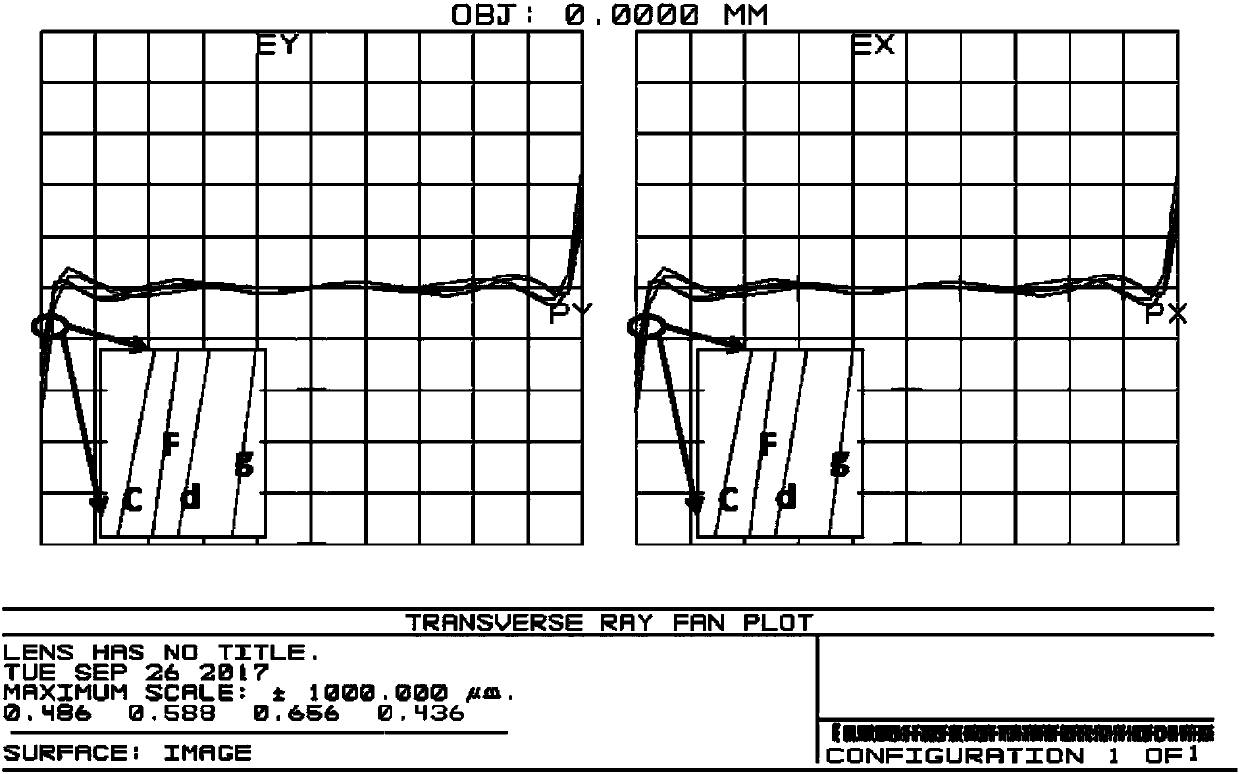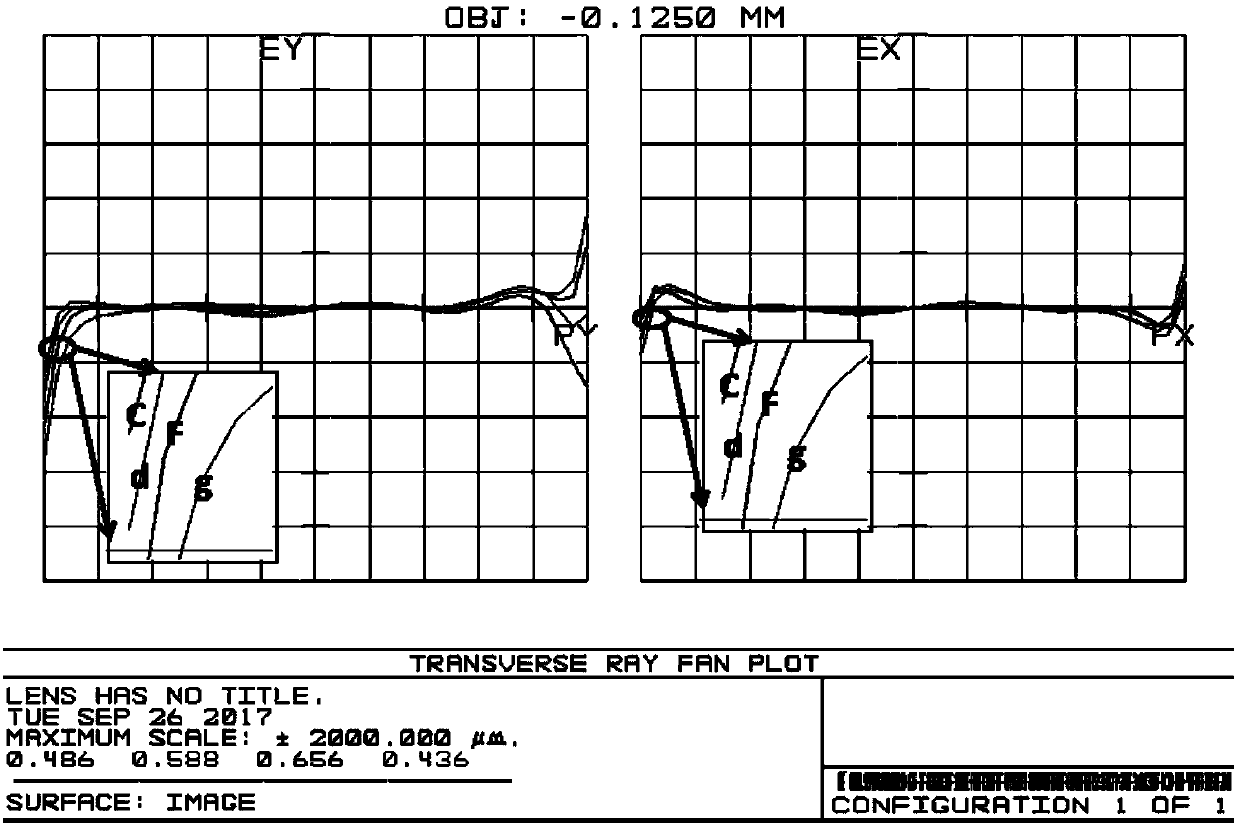Microscope objective lens
A technology of microscope objective lens and object space, which is applied in the field of microscope objective lens, can solve the problems of increased processing difficulty, increased objective lens cost, and difficulty in chromatic aberration correction, and achieve the effects of reducing processing difficulty, improving objective lens qualification rate, and improving imaging quality
- Summary
- Abstract
- Description
- Claims
- Application Information
AI Technical Summary
Problems solved by technology
Method used
Image
Examples
Embodiment 1
[0029] Embodiment 1: as figure 1 As shown, the microscope objective lens of this embodiment is composed of the first lens group G1 with positive refractive power as a whole and the second lens group G2 with negative refractive power as a whole in order from the object. Starting from the object side, the first lens group G1 consists of the first doublet lens group CL11, the third singlet lens L3, the fourth singlet lens L4, the second doublet lens group CL12, the third doublet lens group CL13 and the first triplet lens group. The second lens group G2 is composed of the second triplet lens group CL21 and the fifteenth single lens L15; the first doublet lens group CL11 is composed of the first single lens L1 and the second single lens L2 cemented together , the second doublet lens group CL12 is composed of the fifth singlet lens L5 and the sixth singlet lens L6 cemented together, the third doublet lens group CL13 is composed of the seventh singlet lens L7 and the eighth singlet l...
Embodiment 2
[0042] Embodiment 2: as Image 6 As shown, the microscope objective lens of this embodiment is composed of the first lens group G1 with positive refractive power as a whole and the second lens group G2 with negative refractive power as a whole in order from the object. Starting from the object side, the first lens group G1 consists of the first doublet lens group CL11, the third singlet lens L3, the fourth singlet lens L4, the second doublet lens group CL12, the third doublet lens group CL13 and the first triplet lens group. The second lens group G2 is composed of the second triplet lens group CL21 and the fifteenth single lens L15; the first doublet lens group CL11 is composed of the first single lens L1 and the second single lens L2 cemented together , the second doublet lens group CL12 is composed of the fifth singlet lens L5 and the sixth singlet lens L6 cemented together, the third doublet lens group CL13 is composed of the seventh singlet lens L7 and the eighth singlet l...
Embodiment 3
[0047] Embodiment 3: The microscope objective lens of this embodiment is composed of the first lens group G1 with positive refractive power as a whole and the second lens group G2 with negative refractive power as a whole in order from the object. Starting from the object side, the first lens group G1 consists of the first doublet lens group CL11, the third singlet lens L3, the fourth singlet lens L4, the second doublet lens group CL12, the third doublet lens group CL13 and the first triplet lens group. The second lens group G2 is composed of the second triplet lens group CL21 and the fifteenth single lens L15; the first doublet lens group CL11 is composed of the first single lens L1 and the second single lens L2 cemented together , the second doublet lens group CL12 is composed of the fifth singlet lens L5 and the sixth singlet lens L6 cemented together, the third doublet lens group CL13 is composed of the seventh singlet lens L7 and the eighth singlet lens L8 cemented togethe...
PUM
| Property | Measurement | Unit |
|---|---|---|
| Radius value | aaaaa | aaaaa |
| Radius value | aaaaa | aaaaa |
| Radius value | aaaaa | aaaaa |
Abstract
Description
Claims
Application Information
 Login to View More
Login to View More - R&D
- Intellectual Property
- Life Sciences
- Materials
- Tech Scout
- Unparalleled Data Quality
- Higher Quality Content
- 60% Fewer Hallucinations
Browse by: Latest US Patents, China's latest patents, Technical Efficacy Thesaurus, Application Domain, Technology Topic, Popular Technical Reports.
© 2025 PatSnap. All rights reserved.Legal|Privacy policy|Modern Slavery Act Transparency Statement|Sitemap|About US| Contact US: help@patsnap.com



